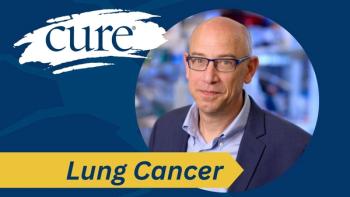
Rare Cancers: Collaboration Moves the Field Forward
Patients, clinicians and researchers should work together to find new therapies for rare cancers, one expert says.
When it comes to rare cancers, collaboration between patient groups, researchers and academic institutions is key to moving the field forward and finding new therapies for the patient population, explained Dr. Suzanne George.
George is a medical oncologist at the Dana-Farber Cancer Institute who specializes in sarcomas – in particular, a rare type of sarcoma called gastrointestinal stromal tumors (GIST). In a recent interview with CURE®, she discussed how multi-party collaboration is vital for this patient population.
“In the rare tumor community, there’s great collaboration… across different sarcoma centers, as well as with the sarcoma patient communities to try to leverage awareness when new trials are available and new strategies of therapeutics are available,” George said.
As the director of clinical research in sarcoma at Dana-Farber, George was involved in pivotal clinical trial research that led to FDA approvals of drugs for rare diseases that have never had treatments available.
There is a focus on stepping away from cytotoxic chemotherapy, when possible, which kills cancer cells, but also damages normal and healthy cells around it. As George and other researchers get a better understanding of the cancer cell biology, the goal is to develop treatments that attack the specific type of cancer a person has.
“It’s a privilege to have the opportunity that patients allow us to be a part of their journey and to try to help them navigate (cancer),” she said. George hopes that one day her career as an oncologist will be obsolete – meaning that cancer no longer exists – but for now, she encourages everyone to consider a clinical trial to help get to that point.
Trials should not be looked at as a “last resort,” as they can offer the latest treatments that can extend or improve patients’ lives. Oftentimes, investigative drugs are added to the current standard of care to see if the new drug can improve outcomes even more.
Another misconception about clinical trials is that patients will be given a placebo for a life-threatening illness, and not be told that they are not actually getting treatment. But, if there is a placebo component of the trial, that is always disclosed to the patient, George said.
Ultimately, patients – especially those with rare cancers like GIST – should ask their health care teams about clinical trials. They should learn what trials are available at their treatment center, what the trial and follow-up entails (extra doctor’s appointments, costs, etc.) as well as how current therapies may work, and make a decision.
“It’s balancing what’s available in the clinical trial space with what are the currently available therapies, and how well do they work. If we have a therapy that’s currently available that we know will be a home run for a person, we, of course, always tell them that,” George said. “We owe it to patients with rare tumors to ensure that we have clinical trial opportunities and novel therapeutics to better understand those diseases, whether rare or common.”
For more news on cancer updates, research and education, don’t forget to





